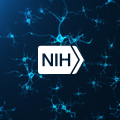
The Tissue Quality and Pipeline for Human Brain Census workshop, co-sponsored by the NIH Blueprint and the NIH BRAIN Initiative, took place on February 9-11 in a virtual format. The goal of the workshop was to seek input on best practices and suggestions to ensure a dependable supply of high-quality human brain tissue for the upcoming Phase III of the NIH BRAIN Initiative’s cell census and atlasing effort of the human brain. Specifically, the workshop aimed to address best methods for human brain tissue collection, processing and stabilization, optimal anatomical annotation methods, requirements for a brain sample standard, issues and solutions for obtaining consent for open sharing of census data, how to ensure biological diversity and a representative sample, and inclusion and exclusion criteria.
After three days of presentations and discussion, NIH BRAIN Director Dr. John Ngai summarized the workshop by presenting key takeaway messages. Specifically, he emphasized the need for standardized tissue preparation and the establishment of standard tissue quality control metrics, the need for a common annotation system aided by photo-documentation, the importance of leveraging the power of biological diversity in the human population by making concerted efforts to recruit from underrepresented groups, the need to increase public awareness of brain donation to broaden the pool of “normal” donors, and the requirement to obtain consent for broad genomic data sharing. Future actions will be taken by NIH to agree upon a set of aspirational goals and to identify steps to achieve these goals. Dr. Ngai ended the workshop with a call for collaboration, inclusion, and respect for all brain donors across the spectrum of diversity.
- Tissue Quality and Pipeline for the Human Brain Census workshop summary(pdf, 423 KB)
- View Agenda(pdf, 242 KB)
